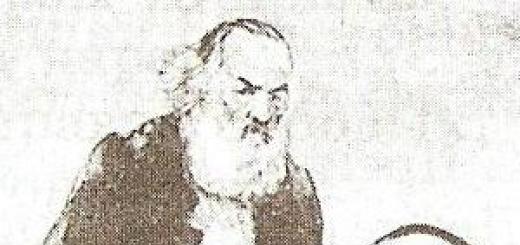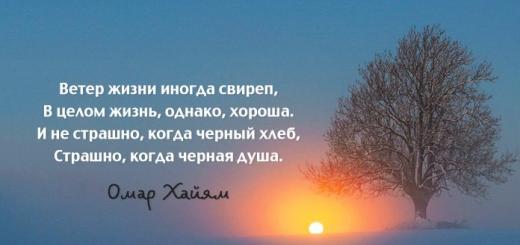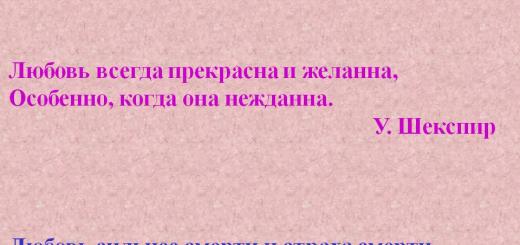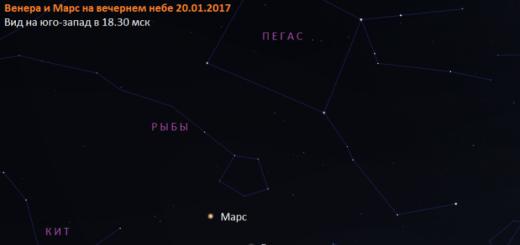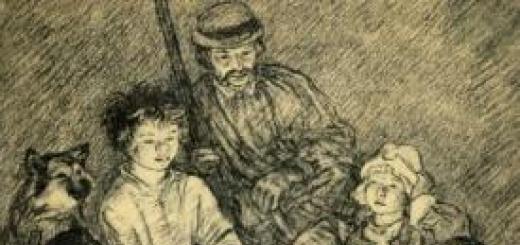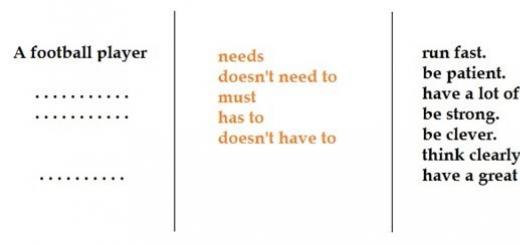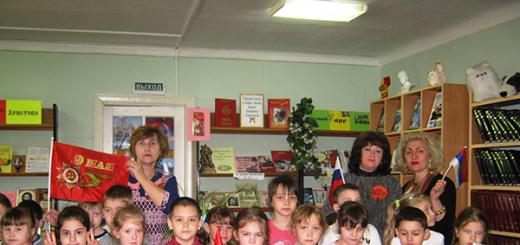Two years after the introduction of new reforms, Nikolai Nekrasov began work on a work that became the pinnacle of his creativity. For many years he worked on the text, and as a result, a poem was created in which the author was not only able to depict the people’s grief, but, together with his characters, sought to answer the following questions: “What is the happiness of the people?”, “How to achieve it?”, “Can an individual be happy in the midst of universal grief?” The analysis of “Who Lives Well in Rus'” is necessary in order to find out which images helped Nekrasov answer these difficult questions.
Concept
When starting the work, the author himself hardly knew the answer to these troubling questions. These were difficult times in the history of the Russian people. The abolition of serfdom did not make life easier for the peasantry. Nekrasov’s original idea was that wandering men would return home after a vain search. During the work, the storyline changed somewhat. The events in the poem were influenced by important social processes. Like his characters, he strives to answer the question: “Is it good to live in Rus'?” And if at the first stage of work on the poem the author does not find grounds for a positive answer, then later representatives of young people appear in society who really find their happiness in going “to the people.”
A striking example was a certain teacher who reported in a letter to Nekrasov that she was experiencing real surges of happiness in her work among the people. The poet planned to use the image of this girl in the development of the storyline. But I didn’t have time. He died without completing his work. Nekrasov wrote the poem “Who Lives Well in Rus'” before last days his life, but it remained unfinished.

Art style
The analysis of “Who Lives Well in Rus'” reveals the main artistic feature works. Since Nekrasov’s book is about the people, and first of all for them, in it he used folk speech in all its diversity. This poem is an epic, one of the purposes of which was to depict life as it is. Fairytale motifs play a significant role in the narrative.
Folklore basis
Nekrasov borrowed a lot from folk art. The analysis of “Who Lives Well in Rus'” allowed critics to identify epics, legends and proverbs that the author actively used in the text. Already in the prologue there are bright folklore motifs. Here a warbler appears, and a self-assembled tablecloth, and many animalistic images of Russian folk tale. And the wandering men themselves resemble heroes of epics and fairy tales. The prologue also contains numbers that have sacred meaning: seven and three.
Plot
The men argued about who would live well in Rus'. Nekrasov, using this technique, reveals the main theme of the poem. The heroes offer several options for the “lucky” ones. Among them are five representatives of different strata social society and the king himself. In order to answer such an alarming question, the wanderers go to long haul. But only the priest and the landowner have time to ask about happiness. As the poem progresses, general questions change to more specific ones. Men are already more interested in the happiness of the working people. And the plot of the story would have been difficult to implement if ordinary men had dared to visit the king himself with their philosophical problems.

Peasant images
The poem contains many peasant images. The author pays close attention to some, but talks about others only in passing. The most typical is the portrait of Yakim Nagogo. Appearance This character symbolizes the hard labor existence that is typical of peasant life in Rus'. But despite the backbreaking work, Yakim did not harden his soul. The analysis of “Who Lives Well in Rus'” gives a clear idea of how Nekrasov saw or wanted to see representatives of the working people. Yakim, despite the inhuman conditions in which he is forced to exist, has not become bitter. He has been collecting pictures for his son all his life, admiring them and hanging them on the walls. And during a fire, he rushes into the fire to save, first of all, his favorite images. But Yakima's portrayal differs from more authentic characters. The meaning of his life is not limited to work and drinking. The contemplation of beauty is also of great importance to him.

Artistic techniques
In the poem, Nekrasov uses symbolism from the very first pages. The names of the villages speak for themselves. Zaplatovo, Razutovo, Dyryavino are symbols of the lifestyle of their inhabitants. Truth-seekers meet during their journey with different people, but the question of who can live well in Rus' remains open. The misfortunes of ordinary Russian people are revealed to the reader. In order to give liveliness and persuasiveness to the narrative, the author introduces direct speech. The priest, the landowner, the bricklayer Trofim, Matryona Timofeevna - all these characters talk about their lives, and from their stories a general bleak picture of Russian life emerges. folk life.
Since the life of a peasant is inextricably linked with nature, its description is harmoniously woven into the poem. A typical everyday picture is created from many details.

The image of landowners
The landowner is undoubtedly the main enemy of the peasant. The first representative of this social stratum that the wanderers met gave a completely detailed answer to their question. Talking about the rich life of the landowners in the past, he claims that he himself always treated the peasants kindly. And everyone was happy, and no one experienced grief. Now everything has changed. The fields are desolate, the man is completely out of control. The 1861 reform is to blame. But the next living example of the “noble class” that appears on the path of the peasants has the image of an oppressor, tormentor and money-grubber. He leads a free life, he does not have to work. The dependent peasants do everything for him. Even the abolition of serfdom did not affect his idle life.
Grisha Dobrosklonov
The question posed by Nekrasov remains open. Life was hard for the peasant, and he dreamed of changes for the better. Not one of those who meet on the way of wanderers is a happy person. Serfdom was abolished, but still not completely resolved. The reforms were a strong blow to both the landowner class and the working people. However, without suspecting it, the men found what they were looking for in the image of Grisha Dobrosklonov.
Why only a scoundrel and money-grubber can live well in Rus' becomes clear when this character appears in the poem. His fate is not easy, like the fate of other representatives of the working class. But, unlike other characters in Nekrasov’s work, Grisha is not characterized by submission to the prevailing circumstances.

Personifies revolutionary sentiments, which began to appear in society in the second half of the 19th century. At the end of the poem, albeit unfinished, Nekrasov does not give an answer to the question in search of which the truth-seekers wandered for so long, but makes it clear that people's happiness is still possible. And not the least role in it will be played by the ideas of Grisha Dobrosklonov.
1. Introduction. The poem “Who Lives Well in Rus'” is one of Nekrasov’s most significant works. The poet managed to unfold a large-scale picture depicting the life of ordinary Russian people. The search for happiness by men is a symbol of the centuries-old desire of the peasantry for better life. The content of the poem is very tragic, but it ends with a solemn affirmation of the future revival of “Mother Rus'”.
2. History of creation. The idea of writing a real epic dedicated to the common people came to Nekrasov in the late 1850s. After the abolition of serfdom, this plan began to be realized. In 1863, the poet got to work. Separate parts of the poem were published as they were written in the journal Otechestvennye zapiski.
The part “A Feast for the Whole World” was able to see the light of day after the author’s death. Unfortunately, Nekrasov did not have time to finish work on the poem. It was assumed that the wandering men would end their journey in St. Petersburg. This way they can bypass all the supposed " happy people", not excluding the king.
3. Meaning of the name. The title of the poem has become a stable common phrase, carrying within itself the eternal Russian problem. Both in the time of Nekrasov and now, Russian people remain dissatisfied with their position. Only in Russia could the saying “It’s good where we are not” appear. In essence, “who lives well in Rus'” - a rhetorical question. It is unlikely that there will be many people in our country who will answer that they are completely satisfied with their lives.
4. Genre Poem
5. Subject. The main theme of the poem is the unsuccessful search for national happiness. Nekrasov somewhat departs from his selfless service to the common people, arguing that not a single class can consider itself happy. A common misfortune unites all categories of society, which allows us to talk about a single Russian people.
6.Issues. The central problem of the poem is the eternal Russian grief and suffering arising from backwardness and low level development of the country. In this regard, the peasantry occupies a special position. Being the most downtrodden class, it nevertheless retains within itself healthy national forces. The poem touches on the problem of the abolition of serfdom. This long-awaited act did not bring the expected happiness. Nekrasov owns the most famous phrase describing the essence of the abolition of serfdom: “The great chain has broken... One end for the master, the other for the peasant!..”.
7. Heroes. Roman, Demyan, Luka, Gubin brothers, Pakhom, Prov. 8. Plot and composition The poem has a ring composition. A fragment is constantly repeated that explains the journey of the seven men. The peasants drop everything they are doing and go in search of a happy man. Each hero has his own version of this. The wanderers decide to meet all the “candidates for happiness” and find out the whole truth.
The realist Nekrasov allows for a fairy-tale element: the men receive a self-assembled tablecloth, allowing them to continue their journey without any problems. The first seven men meet the priest, in whose happiness Luka was sure. The clergyman “in good faith” tells the wanderers about his life. From his story it follows that priests do not enjoy any special advantages. The well-being of priests is only an apparent phenomenon for the laity. In fact, the life of a priest is no less difficult than that of other people.
The chapters “Rural Fair” and “Drunken Night” are dedicated to both the reckless and difficult life of the common people. Ingenuous fun gives way to endless drunkenness. Alcohol has been one of the main troubles of Russian people for centuries. But Nekrasov is far from a decisive condemnation. One of the characters explains the tendency to drink: “Great sadness will come when we stop drinking!..”.
In the chapter “The Landowner” and the part “The Last One,” Nekrasov describes the nobles who also suffered from the abolition of serfdom. For the peasants, their suffering seems far-fetched, but in fact, the breakdown of the centuries-old way of life “hit” the landowners very hard. Many farms were ruined, and their owners were unable to adapt to the new conditions. The poet dwells in detail on the fate of a simple Russian woman in the part “Peasant Woman”. She is considered happy. However, from the peasant woman’s story it becomes clear that her happiness lies not in gaining something, but in getting rid of trouble.
Even in the chapter “Happy” Nekrasov shows that the peasants do not expect favors from fate. Their ultimate dream is to avoid danger. The soldier is happy because he is still alive; The stonecutter is happy because he continues to have enormous strength, etc. In the part “A Feast for the Whole World,” the author notes that the Russian peasant, despite all the troubles and suffering, does not lose heart, treating grief with irony. In this regard, the song “Veselaya” with the refrain “It is glorious to live for the people in holy Rus'!” is indicative. Nekrasov felt the approach of death and realized that he would not have time to finish the poem. Therefore, he hastily wrote the “Epilogue”, where Grisha Dobrosklonov appears, dreaming of freedom and the good of all the people. He was supposed to become the happy person that wanderers are looking for.
9. What the author teaches. Nekrasov truly had a heart for Russia. He saw all its shortcomings and sought to draw the attention of his contemporaries to them. The poem “Who Lives Well in Rus'” is one of the poet’s most elaborate works, which, according to the plan, was supposed to present the whole of tormented Russia at a glance. Even in unfinished form, it sheds light on a whole series of purely Russian problems, the solution of which is long overdue.
When studying writers of the nineteenth century, one cannot ignore Nikolai Alekseevich Nekrasov. He dedicated most of his works to the common people; he strove to understand and reveal the Russian soul, and often touched on the topic of liberating peasants from serfdom. The epic poem “Who Lives Well in Rus'” - the poet’s most ambitious work - was no exception.
The plot of the poem begins when seven men, seven temporary peasants from different villages, begin to argue about “who lives a fun, free life in Rus'?” So, not agreeing on opinions, the main characters go in search of the “lucky ones”, abandoning all their affairs.
It is noteworthy that Nekrasov uses folklore and many fairy-tale elements in his work. I think this allowed the author not only to build a logical composition of the poem, but also to show the eternal desire of the people for truth, the belief that good always triumphs over evil.
The first person on the way for wanderers is a priest. He sees happiness in “peace, wealth, honor,” and recalls with longing the serfdom past. At that time, the church was maintained by wealthy landowners, but with the advent of the new reform they went bankrupt, which could not but affect the financial condition of the clergy. The heavy burden of maintaining the clergy fell on the shoulders of the peasant, who “he himself is in need, and would be glad to give, but there is nothing.”
The landowners Obolt-Obolduev and Utyatin, who appear in the poem, have similar concepts about happiness. They mourn the abolition of serfdom, the loss of their former idleness and luxury of life. Now, everything that was so dear to them was taken away from the landowners: obedient slaves and land, but most of all they regret the loss of their power:
I will have mercy on whomever I want,
Whoever I want, I’ll execute.
The law is my desire!
The fist is my police!
And among the common people, seven men are trying to find happiness. Thus, those who want to drink a free glass talk about their happiness: the old woman is happy that “up to a thousand turnips were born on a small ridge,” the soldier is happy that “in twenty battles ... he was killed, and not killed,” the yard man is happy because he has “an illness honorable,” the mason is proud of his extraordinary strength. But none of the narrators truly convinces our wanderers that he is happy. Their joy is rather based on material values, amazing chance, or simply the absence of misfortune. No wonder the chapter “happy” ends with the following lines:
Hey, man's happiness!
Leaky with patches,
Humpbacked with calluses,
Go home.
At the fair, the main characters are told a story about Yermil Girin. “He had everything he needed for happiness: peace of mind, money, and honor.” That honor was earned by intelligence, honest work and kindness; Yermil enjoyed great respect among the people. It would seem that the men found a happy one, but even this character cannot be considered as such, because he ended up in prison for supporting a peasant uprising.
In his poem, Nekrasov pays special attention to the female image, the difficult fate of Matryona Timofeevna. But you can call her happy only before marriage (“I was lucky in the girls: we had a good, non-drinking family”). Matryona had to endure many difficult trials, which she endured with enviable fortitude and bravely withstood: she lay down under the rods instead of her son, saved her husband from conscription, and survived hunger. One cannot help but admire the image of a Russian woman who is a double slave: a slave of her husband and the peasantry, but who has retained her honor and dignity. The people consider her happy, but Matryona Timofeevna herself does not agree with this: “It’s not a matter of looking for a happy woman among women.”
I think it is no coincidence that at the end of the poem Nekrasov introduces the image of the “people's defender” Grisha Dobrosklonov. And although fate was preparing “consumption and Siberia” for the hero, from childhood he decided to devote his entire life to ensuring that “every peasant would live freely and cheerfully throughout all of holy Rus'.” In my opinion, it was in the image of Grisha Dobrosklonov that Nekrasov portrayed main idea works: true happiness is to make all the people around happy, and this can only be achieved when thoughts about revolutionary transformation enter the people's consciousness.
Analysis poem "Who Lives Well in Rus'" by N.A. Nekrasova for those who take Russian language and literature tests.
The ideological and artistic originality of the poem “Who Lives Well in Rus'” (1865-1877).
1. The problematics of the work are based on the correlation of folklore images and specific historical realities.
The problem of national happiness is the ideological center of the work.
Images of seven wandering men - symbolic image Russia, moving from its place (the work is not finished).
2. The poem reflected the contradictions of Russian reality in the post-reform period: a) Class contradictions (chapter “Landowner”, “Last One”), b) Contradictions in the peasant consciousness (on the one hand, the people are great workers, on the other, the drunken, ignorant masses), c) Contradictions between the high spirituality of the people and the ignorance, inertia, illiteracy, and downtroddenness of the peasants (Nekrasov’s dream of the time when a peasant “will carry Belinsky and Gogol from the market”), d) Contradictions between the strength, rebellious spirit of the people and humility, long-suffering, obedience (images of Savely - the Holy Russian hero and Jacob the faithful, exemplary slave).
The reflection of revolutionary democratic ideas in the poem is associated with the image of the author and people's defender (Grisha Dobrosklonov). The author’s position differs in many ways from the position of the people (see previous paragraph). The image of Grisha Dobrosklonov was based on N. A. Dobrolyubov.
3. The reflection of the evolution of national consciousness is associated with the images of seven men who are gradually approaching the truth of Grisha Dobrosklonov from the truth of the priest, Ermila Girin, Matryona Timofeevna, Savely. Nekrasov does not claim that the peasants accepted this truth, but this was not the author’s task.
4. “Who Lives Well in Rus'” - a work of critical realism:
a) Historicism (reflection of the contradictions in the life of peasants in post-reform Russia (see above),
b) Depiction of typical characters in typical circumstances (collective image of seven men, typical images of a priest, landowner, peasants),
c) The original features of Nekrasov’s realism are the use of folklore traditions, in which he was a follower of Lermontov and Ostrovsky.
Nekrasov used the traditions of the folk epic, which allowed a number of researchers to interpret the genre “Who Lives Well in Rus'” as an epic (Prologue, the journey of men across Rus', a generalized folk view of the world - seven men).
The poem is characterized by the abundant use of folklore genres: a) Fairy tale(Prologue), b) Epics (traditions) - Savely, the hero of the Holy Russian, c) Song - ritual (wedding, harvest, lament songs) and labor, d) Parable (Woman's parable), e) Legend (About two great sinners ), f) Proverbs, sayings, riddles.
1. Genre originality of the poem.
2. Composition of the poem.
3. Problems of the poem.
4. The system of characters in the poem.
5. The role of folklore in the poem.
“Who Lives Well in Rus'” is Nekrasov’s final work. Conceived in 1863, the poem was never completed; death prevented it. The genre of the work - and researchers usually call it an epic poem or an epic poem - is quite unusual for the 19th century. The tradition of large epic works, closely connected with the life of the people and their creativity, was interrupted long ago. We are interested in two questions: how are the genre properties of the epic expressed and what are the reasons for its appearance?
The epic nature of the poem is manifested in the composition, and in the unhurried movement of the plot, and in the spatial breadth of the depicted world, and in the large number of characters inhabiting the poem, and in the enormous temporal and historical extent, and, most importantly, in the fact that in the poem Nekrasov was able to escape from his of lyrical subjectivity, the people themselves become the narrator and observer here.
Even the unfinished nature of the poem, unintentional of course, seems to be part of the plan. The prologue, revealing the main idea - to find a happy one, sets such a long-term events that the poem can grow as if on its own, adding more and more new parts and chapters, united by the refrain: “Who lives cheerfully, / at ease in Rus'?” The very first words: “In what year - count, / In what land guess...” - set the scale of the place - this is all of Rus', and the scale of time - not only the present (the definition of men as “temporarily obligated” gives a time reference - soon after peasant reform), but also the recent past, which is remembered by the priest, and the landowner, and Matryona Timofeevna, and even more distantly - the youth of Savely, and even further - the folk songs from “A Feast for the Whole World” do not have a specific temporal timing.
The question that the heroes are arguing about is also epic, because it is a central issue for the people’s consciousness of happiness and sorrow, truth and falsehood. It is being decided by the whole world: the poem has many voices, and each voice has its own story, its own truth, which can only be found together.
The poem consists of four large, fairly autonomous parts. The sequence of parts still remains a question (Nekrasov’s authorial will is unknown to us; the poem was not completed). In our publishing practice, there are two options - either “Prologue and the first part”, “Peasant woman”, “Last child”, “Feast for the whole world”, or after “Prologue and first part” “Last child” is placed, then “Peasant woman” and in at the very end of “A Feast for the Whole World.” Each option has its own advantages. “The Last One” and “A Feast for the Whole World” are more closely connected than the others, they have a single place of action and common heroes. The other sequence is more meaningful. Nekrasov's poem is structured in such a way that the external plot has no meaning for it. of great importance. Actually, there is no general plot. “Prologue” offers a plot motivation - the search for a happy one, and then only the motive of the road, the endless journey of seven men, unites the narrative. In the first part, even individual chapters are quite independent, in “The Peasant Woman” the plot is connected with the events of the life of Matryona Timofeevna, in “The Last One” it presents the story of the clash between peasants and the landowner, in “A Feast for the Whole World” there is no plot as such at all. All the more important is the internal plot that unites the epic - the consistent movement of people's thought, aware of its life and destiny, its truth and ideals, a contradictory and complex movement that can never be completed. A gradual deepening into the life of the people, which appears in the first part in the external crowd and polyphony, in the second - in the dramatic collision unfolding before our eyes, in “The Peasant Woman” - in the exceptional, heroic female character, and although the heroine talks about herself (and this talks about very high degree self-awareness), but this is a story not only about her private fate, but about the general female lot. This is the voice of the people themselves, it sounds in the songs, of which there are so many in “Peasant Woman”. And finally, the last part, which consists entirely of songs in which the past, present and future of the people are comprehended and in which they appear before us in their deep, essential meaning.
The character system in the epic is complex. The most characteristic thing about it is its large number. In the chapters of the first part “Rural Fair”, “Drunken Night”, “Happy” before us great amount of people. Nekrasov said that he collected the poem “word by word,” and these “words” became the voices-stories of the people’s crowd. The construction of the character system is also connected with the conflict of the poem. If the original plan, which can be reconstructed from the dispute between the peasants in the “Prologue,” presupposed the peasants’ opposition to the entire social pyramid from the official to the tsar, then changing it (the turn to depicting the life of the people) determined another conflict - the world of the peasants and the world most directly associated with peasant life - landowner. The landowners in the poem are represented quite diversely. The first of them is Obolt-Obolduev, whose story paints a general picture of landowner life in the past and present and whose image connects many possible landowner types (he is both a keeper of patriarchal foundations, and a lyricist praising the estate idyll, and a despot-serf owner). The conflict between the worlds is presented most sharply in “The Last One.” The paradoxical anecdotal plot of the acted “comedy” also corresponds to the sharply grotesque image of the landowner. Prince Utyatin is an escheat, half-dead, hateful creature; his unseeing, dead eye, which “turns like a wheel” (a repeated image several times), grotesquely embodies the image of dead life.
The peasant world is by no means homogeneous. The main division is built on the moral confrontation of those who seek the truth, like the seven men who take a vow “... the matter is controversial / According to reason, according to God, / According to the honor of the story,” those who defend the people’s honor and dignity, like Yakim Naked (“... we are great people / In work and in revelry”), who allows us to understand that happiness is not in “peace, wealth, honor” (the original formula), but in strict truth (the fate of Ermila Girin), who turns out to be heroes both in their rebellion and in their repentance, like Savely - those who express the moral strength of the entire peasant world, and those who are separated from this world, from the lackey in "Happy" to the traitor Gleb the headman in the legend "About two great sinners."
Grisha Dobrosklonov occupies a special place among the heroes of the poem. The son of a poor sexton, an intellectual commoner, he is depicted as a man who knows what happiness is and is happy because he has found his way. “For all the suffering, Russian / Peasantry, I pray!” - says Savely, and Grisha, continuing the theme of life for everyone, creates a song about “the lot of the people, their happiness.” Grisha’s songs in “A Feast for the Whole World” naturally complete the song plot, simultaneously creating an image of the passage of time: “Bitter times - bitter songs” - the past, “Both old and new” - the present, “Good times - good songs” - the future.
The significance of folklore for the poem is enormous. Free and flexible poetic meter, independence from rhyme made it possible to convey living folk speech, rich in sayings and proverbs, aphorisms, and comparisons. An interesting technique is the use of riddles in which Nekrasov appreciates their figurative power: “Spring has come - the snow has had its effect! / He is humble for the time being: / He flies - he is silent, he lies - he is silent, / When he dies, then he roars. / Water – everywhere you look!” But main role genres of folk poetry play in the poem - a fairy tale (a magic tablecloth, a talking warbler), lamentations and, most importantly, songs, which increasingly strengthen their role towards the end of the poem. A Feast for the Whole World can be called a folk opera.
On February 19, 1861, a long-awaited reform took place in Russia - the abolition of serfdom, which immediately shook up the entire society and caused a wave of new problems, the main of which can be expressed in a line from Nekrasov’s poem: “The people are liberated, but are the people happy?..”. The singer of folk life, Nekrasov did not stand aside this time either - in 1863, his poem “Who Lives Well in Rus'” began to be created, telling about life in post-reform Rus'. The work is considered the pinnacle of the writer’s work and to this day enjoys the well-deserved love of readers. At the same time, despite its seemingly simple and stylized fairy-tale plot, it is very difficult to understand. Therefore, we will analyze the poem “Who Lives Well in Rus'” in order to better understand its meaning and problems.
History of creation
Nekrasov created the poem “Who Lives Well in Rus'” from 1863 to 1877, and individual ideas, according to contemporaries, arose from the poet back in the 1850s. Nekrasov wanted to present in one work everything that, as he said, “I know about the people, everything that I happened to hear from their lips,” accumulated “by word” over 20 years of his life. Unfortunately, due to the death of the author, the poem remained unfinished; only four parts of the poem and a prologue were published.
After the death of the author, the publishers of the poem were faced with the difficult task of determining in what sequence to publish the disparate parts of the work, because Nekrasov did not have time to combine them into one whole. The problem was solved by K. Chukovsky, who, relying on the writer’s archives, decided to print the parts in the order in which they are known to the modern reader: “The Last One,” “The Peasant Woman,” “A Feast for the Whole World.”
Genre of the work, composition
There are many different genre definitions of “Who Lives Well in Rus'” - they talk about it as a “travel poem”, “Russian Odyssey”, even such a confusing definition is known as “the protocol of a kind of all-Russian peasant congress, an unrivaled transcript of debates on a pressing political issue " However, there is also the author’s definition of the genre, which most critics agree with: epic poem. An epic involves depicting the life of an entire people at some decisive moment in history, be it a war or other social upheaval. The author describes what is happening through the eyes of the people and often turns to folklore as a means of showing the people's vision of the problem. An epic, as a rule, does not have one hero - there are many heroes, and they play more of a connecting role than a plot-forming role. The poem “Who Lives Well in Rus'” fits all these criteria and can safely be called an epic.
Theme and idea of the work, characters, issues
The plot of the poem is simple: “on a high street” seven men meet and argue about who has the best life in Rus'. To find out, they go on a journey. In this regard, the theme of the work can be defined as a large-scale narrative about the life of peasants in Russia. Nekrasov covered almost all spheres of life - during his wanderings, the men would meet different people: a priest, a landowner, beggars, drunkards, merchants; the cycle of human destinies would pass before their eyes - from a wounded soldier to a once all-powerful prince. The fair, the prison, hard work for the master, death and birth, holidays, weddings, auctions and elections of the burgomaster - nothing escaped the gaze of the writer.
The question of who should be considered the main character of the poem is ambiguous. On the one hand, formally it has seven main characters - men traveling in search of a happy man. The image of Grisha Dobrosklonov also stands out, in whose person the author portrays the future people's savior and educator. But besides this, the poem clearly shows the image of the people as the image of the main actor works. The people appear as a single whole in scenes of the fair, mass celebrations (“Drunken Night”, “Feast for the Whole World”), and haymaking. The whole world makes various decisions - from the help of Yermil to the election of the burgomaster, even a sigh of relief after the death of the landowner escapes from everyone at the same time. The seven men are not individualized either - they are described as briefly as possible and do not have their own individual traits and characters, pursue the same goal and even speak, as a rule, all together. The secondary characters (servant Yakov, village headman, Savely) are described by the author in much more detail, which allows us to talk about special creation with the help of seven wanderers of a conventionally allegorical image of the people.
The lives of the people are, in one way or another, affected by all the problems raised by Nekrasov in the poem. This is the problem of happiness, the problem of drunkenness and moral degradation, sin, the relationship between the old and new way of life, freedom and lack of freedom, rebellion and patience, as well as the problem of the Russian woman, characteristic of many of the poet’s works. The problem of happiness in the poem is fundamental, and is understood differently by different characters. For the priest, the landowner and other characters endowed with power, happiness is represented in the form of personal well-being, “honor and wealth.” A man's happiness consists of various misfortunes - a bear tried to kill him, but could not, they beat him in the service, but did not kill him to death... But there are also characters for whom there is no personal happiness separate from the happiness of the people. This is Yermil Girin, the honest burgomaster, and this is the seminarian Grisha Dobrosklonov who appears in the last chapter. In his soul, love for his poor mother outgrew and merged with love for his equally poor homeland, for the happiness and enlightenment of which Grisha plans to live.
From Grisha’s understanding of happiness arises the main idea of the work: true happiness is possible only for those who do not think about themselves, and are ready to spend their whole life for the happiness of everyone. The call to love your people as they are and to fight for their happiness, without remaining indifferent to their problems, sounds clearly throughout the poem, and finds its final embodiment in the image of Grisha.
Artistic media
The analysis of “Who Lives Well in Rus'” by Nekrasov cannot be considered complete without considering the means artistic expression used in the poem. Basically, this is the use of oral folk art - both as an object of depiction, to create a more reliable picture of peasant life, and as an object of study (for the future people's intercessor, Grisha Dobrosklonov).
Folklore is introduced into the text either directly, as stylization: stylization of the prologue as a fairy-tale beginning (the mythological number seven, a self-assembled tablecloth and other details eloquently speak about this), or indirectly - quotes from folk songs, references to various folklore subjects (most often to epics).
The speech of the poem itself is stylized as a folk song. Let's pay attention to big number dialectisms, diminutive suffixes, numerous repetitions and the use of stable constructions in descriptions. Thanks to this, “Who Lives Well in Rus'” can be perceived as folk art, and this is not accidental. In the 1860s, there was an increased interest in folk art. The study of folklore was perceived not only as scientific activity, but also as an open dialogue between the intelligentsia and the people, which, of course, was close to Nekrasov in ideological terms.
Conclusion
So, having examined Nekrasov’s work “Who Lives Well in Rus',” we can confidently conclude that, despite the fact that it remained unfinished, it is still of enormous literary value. The poem remains relevant to this day and can arouse interest not only among researchers, but also among ordinary readers interested in the history of problems of Russian life. “Who Lives Well in Rus'” has been repeatedly interpreted in other forms of art - in the form of a stage production, various illustrations (Sokolov, Gerasimov, Shcherbakova), as well as a popular print on this subject.
Work test


